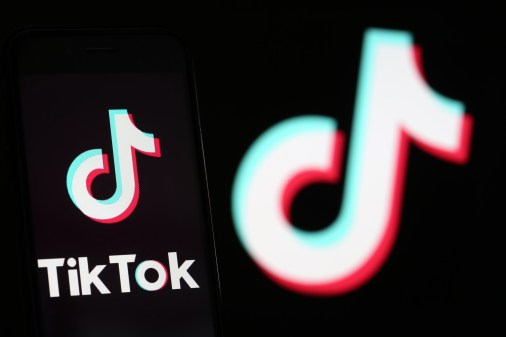How higher education leaders tried to stave off disaster in 2020

Despite a few moments that might be called relative successes, a year spent scaling new technologies to serve entire campuses, ensuring equal access to technology among students and staff and protecting institutional health, all while trying to maintain academic quality, has left higher education leaders feeling constantly at the edge of disaster.
Several college and university leaders told EdScoop that, much like other sectors, higher education has had to continue to improvise and innovate as a year dominated by a deadly, costly pandemic has continued to unravel. A health crisis that many hoped would be a short-term disruption continues to surge, keeping up the heightened demand for tools like virtual conferencing software, Wi-Fi hotspots and mobile computing devices as students remain stuck in a most abnormal college experience.
The continued moratorium on traditional in-person education has put pressure on institutions to think more about the long-term quality, accessibility and relevance of higher education. And it’s put historic financial burdens on colleges and universities from lost revenue and insufficient emergency funding.
Small victories
“I think the key word in 2020 has been uncertainty,” said Kevin Davis, chief information officer at Davidson College in North Carolina. “And flexibility and agility in making decisions and taking to light new information and adjusting how we operate.”
The switch to online learning was largely successful at Davidson, Davis said. Faculty received training to adapt their classes and the school was able to scale technologies like virtual conferencing software and learning management tools to its nearly 2,000 students quickly thanks to a pre-existing cloud environment, he said.
And in preparation for the fall semester, the college made further investments in technology to be able to bring students back to campus, Davis said. Over the summer break, the college set up internet hotspots, established a laptop loaner program, made student services accessible remotely, implemented COVID-19 testing and data management strategies and purchased cybersecurity upgrades.
But Davis said he believes the college navigated the challenges of 2020 well. “You’ve got to celebrate being able get students, faculty and staff through a really tough semester,” he said.
On a much grander scale, the California State University system has also claimed success. More than 17,000 faculty members across the 23-campus organization participated early in professional training programs to help them navigate the online pivot, while tens of millions of dollars’ worth of mobile computing equipment was loaned out to students, said Cal State spokesman Mike Uhlenkamp.
The pandemic has also forced faculty and staff to think creatively about how to deliver education and engage students with learning, Uhlenkamp said.
“People who have taught a course for 5, 10, 15 years have had to reinvent themselves and utilize the latest and greatest technology,” he said. “And I think coming out of this, that some of them will still remain on those modes or they’ll feel comfortable enough to teach a class in a virtual or an online mode.”
Many other institutions have noted their successes during a turbulent year, including Rutgers University, which created virtual reality environments where students could practice learned skills, and Virginia Tech, where a professor developed free software that gives musicians the ability to perform together despite being physically isolated.
On the brink
Despite a few “little stories that stitch together the silver linings of higher ed,” the outlook for colleges and universities remains grim, said Rachel Fishman, deputy director for education policy research at the think tank New America.
“This is a difficult crisis that only continues to get worse as the year goes on,” Fishman said. “And what a disaster it has been.”
COVID-19 will continue to represent an existential threat to colleges and universities as long as the health crisis lasts, Fishman said, as declining enrollment and nearly empty campuses eat into revenue.
“It’s all racial, ethnic groups that are showing the enrollment declines, and the decline is becoming more severe,” said Mikyung Ryu, a researcher for the National Student Clearinghouse, which reported that 76% of colleges saw a drop in undergraduate enrollment for the fall 2020 semester.
Along with thinning student rosters, the sudden transformation of college into a mostly remote experience has also cut into other sources of income, like dormitories, dining services and parking.
“We thought the hardest thing for institutions was going to be this flip online where they’re going to have to suddenly invest in all this infrastructure,” Fishman said. “But what the big cost was for institutions was the forgone revenue of auxiliary expenses.”
And if institutions continue to lose revenue, Fishman said, there will likely be widespread layoffs of faculty and staff, possible tuition increases and even campus closures.
“It feels like a very slow moving crisis in a way,” Fishman said.
Institutions were able to stave off some of this year’s lost revenue with funding from the CARES Act in March, which gave higher education $13 billion in federal grants. But institutions are not likely to receive more funding soon, with the Department of Education pushing back on educators’ requests for more federal aid. If students are unable to return to the classroom, higher education will find itself in a dire financial situation, Fishman said.
Changing needs of students
The pandemic has also forced university leaders to examine the quality and accessibility of the educations they offer, as well as the changing needs of students. Entirely remote learning is unlikely to become the norm, Fishman said, though some vestiges of the education community’s coronavirus response may stick around.
“I think there’s going to be very few people who won’t want to be fully online [after the pandemic],” Fishman said. “But I also think there’s going to be a lot of people who don’t want to be fully in class if they don’t need to be either.”
The definition of who is a college student has also changed, with adult learners accounting for a growing share of the college-student population, she said. Nearly 40% of undergraduate students in 2020 are 25 or older, according to the National Center for Education Statistics.
And many in that growing group are likely to prefer the flexibility of online learning, particularly if they have children or full-time jobs, said Ed Klonoski, the president of Charter Oak State College, a fully online public college based in Connecticut.
Fishman predicted that post-pandemic students will likely want to take advantage of the flexibility of online and hybrid learning environments, prompting schools to continue evaluating the university experience.
“Higher education will have to think about who they’re serving,” she said. “Most students are non-traditional in some way and institutions will have to cater to the needs of those students and they’re going to want flexibility.”
This story is part a StateScoop and EdScoop special report on the lessons of 2020. Read the rest of the report.




